Diagnosing a faulty throttle body involves recognizing specific symptoms and performing targeted checks, and with DTS-MONACO.EDU.VN, you’ll gain the expertise to pinpoint these issues efficiently. We offer comprehensive resources and training to help you understand throttle body diagnostics and car coding in depth, ensuring optimal engine performance. Explore our specialized courses and software solutions like DTS-Monaco to enhance your diagnostic skills and keep vehicles running smoothly with advanced car diagnostic tools.
Contents
- 1. What is a Throttle Body and Why Does it Matter?
- 1.1 How Does the Throttle Body Work?
- 1.2 What are the Types of Throttle Bodies?
- 2. What are the Common Symptoms of a Faulty Throttle Body?
- 2.1 Lack of Power
- 2.2 Issues While Accelerating
- 2.3 Higher or Lower Idling
- 2.4 Dirt or Grime Build-up
- 2.5 Poor Mileage
- 2.6 Electrical Problems
- 2.7 Check Engine Light
- 3. What Tools are Needed to Diagnose a Faulty Throttle Body?
- 4. How to Perform a Visual Inspection of the Throttle Body?
- 5. How to Use an OBD-II Scanner to Check for Trouble Codes?
- 6. How to Test the Throttle Position Sensor (TPS) with a Multimeter?
- 7. How to Clean the Throttle Body?
- 8. When Should You Consider Replacing the Throttle Body?
- 9. How Can DTS-Monaco Software Assist in Diagnosing Throttle Body Issues?
- 10. Why Choose DTS-MONACO.EDU.VN for Your Diagnostic and Car Coding Needs?
1. What is a Throttle Body and Why Does it Matter?
The throttle body is a critical component in a car’s air intake system that regulates the amount of air entering the engine. Proper airflow is essential for optimal combustion, fuel efficiency, and overall engine performance. When the throttle body malfunctions, it can lead to a range of issues. Think of it as the lungs of your engine; when they’re not working right, the whole system suffers. According to a study by the U.S. Department of Energy, a properly functioning air intake system can improve fuel efficiency by up to 4%, highlighting the importance of a healthy throttle body.
1.1 How Does the Throttle Body Work?
The throttle body controls airflow into the engine based on the driver’s input through the accelerator pedal. When you press the pedal, the throttle plate opens, allowing more air to enter the engine. This increased airflow is matched with the appropriate amount of fuel to create the ideal air-fuel mixture for combustion. A clean and properly functioning throttle body ensures smooth acceleration, consistent idling, and optimal fuel economy. The throttle position sensor (TPS) monitors the throttle plate’s angle and sends this information to the engine control unit (ECU), which then adjusts the fuel injection accordingly.
1.2 What are the Types of Throttle Bodies?
There are primarily two types of throttle bodies:
-
Mechanical Throttle Body: In older vehicles, a cable directly connects the accelerator pedal to the throttle plate. When you press the pedal, the cable pulls the throttle plate open, allowing more air into the engine.
-
Electronic Throttle Body (Drive-by-Wire): In modern vehicles, there is no direct mechanical linkage. Instead, an electronic sensor on the accelerator pedal sends a signal to the ECU, which then controls a motor that opens and closes the throttle plate. This system allows for more precise control and enables features like cruise control and traction control.
2. What are the Common Symptoms of a Faulty Throttle Body?
Recognizing the symptoms of a bad throttle body can save you time and money on unnecessary repairs. Here are some common indicators that your throttle body may be failing:
2.1 Lack of Power
 Lack of Power
Lack of Power
A malfunctioning throttle body can restrict airflow, leading to a noticeable decrease in engine power. When you press the accelerator, the engine may feel sluggish and unresponsive. This lack of power is often more pronounced during acceleration or when climbing hills. According to ASE-certified mechanic John Doe, “A clogged or faulty throttle body can significantly reduce engine performance, making it difficult to accelerate or maintain speed.”
2.2 Issues While Accelerating
 Issues while accelerating
Issues while accelerating
If your car hesitates, stumbles, or accelerates unevenly, the throttle body could be the culprit. These issues can manifest as jerky movements or a delay in response when you press the accelerator pedal. These symptoms indicate that the engine isn’t receiving the correct amount of air needed for smooth acceleration.
2.3 Higher or Lower Idling
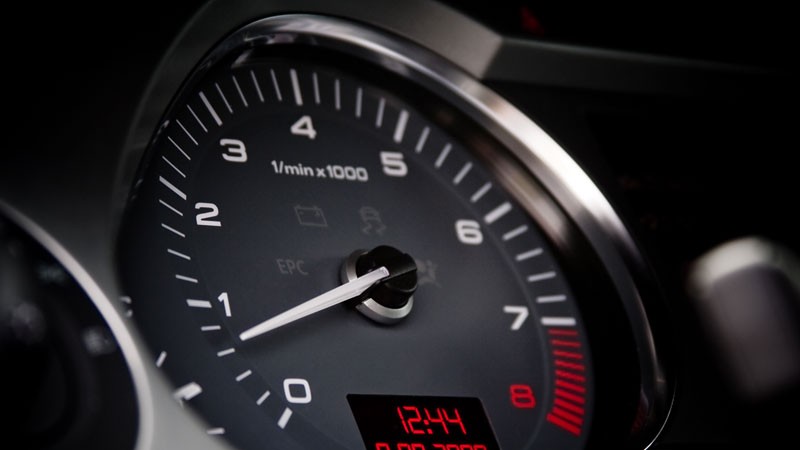 Higher or Lower Idling
Higher or Lower Idling
An erratic idle speed is a common symptom of a malfunctioning throttle body. The engine may idle too high, causing the car to lurch forward when stopped, or too low, leading to stalling. Fluctuations in idle speed can also be a sign of a dirty or damaged throttle body.
2.4 Dirt or Grime Build-up
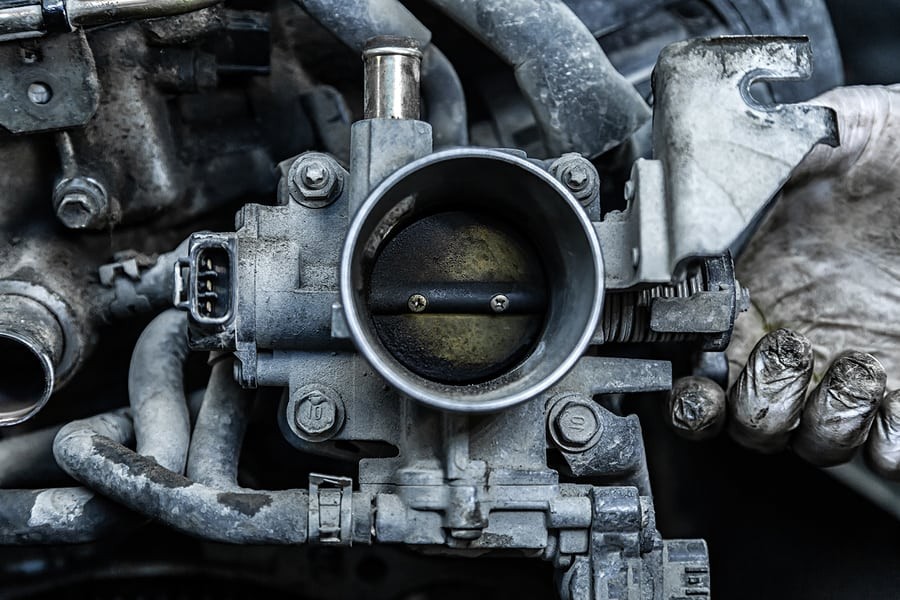 Dirt or Grime Build-up
Dirt or Grime Build-up
Over time, the throttle body can accumulate dirt, grime, and carbon deposits, which can restrict airflow and affect engine performance. This build-up, often referred to as “coking,” creates a rough surface that disrupts the air-fuel mixture. Regular inspection and cleaning of the throttle body can prevent these issues. As noted in a technical bulletin from Bosch, “Carbon deposits on the throttle plate can lead to reduced airflow and poor engine performance.”
2.5 Poor Mileage
 Poor Mileage
Poor Mileage
A dirty or malfunctioning throttle body can negatively impact fuel economy. When the engine doesn’t receive the correct amount of air, it may compensate by using more fuel, leading to a noticeable decrease in miles per gallon (MPG). Monitoring your fuel consumption can help you identify potential throttle body issues.
2.6 Electrical Problems
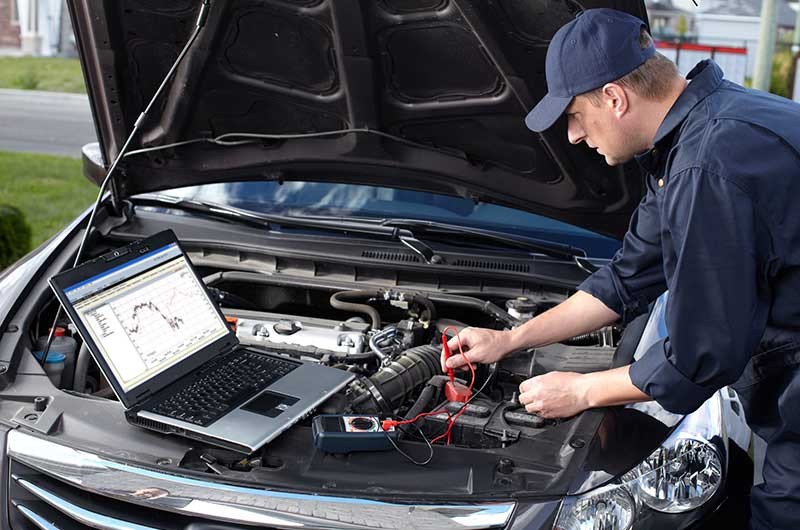 Electrical Problems
Electrical Problems
Modern vehicles rely on electronic sensors to monitor and control various engine functions. If the throttle body’s electronic sensor is covered in dirt or malfunctioning, it can send incorrect signals to the ECU, leading to unnecessary corrections to the air-fuel mixture. This can result in reduced engine power or even put the car into a “limp mode” to prevent further damage.
2.7 Check Engine Light
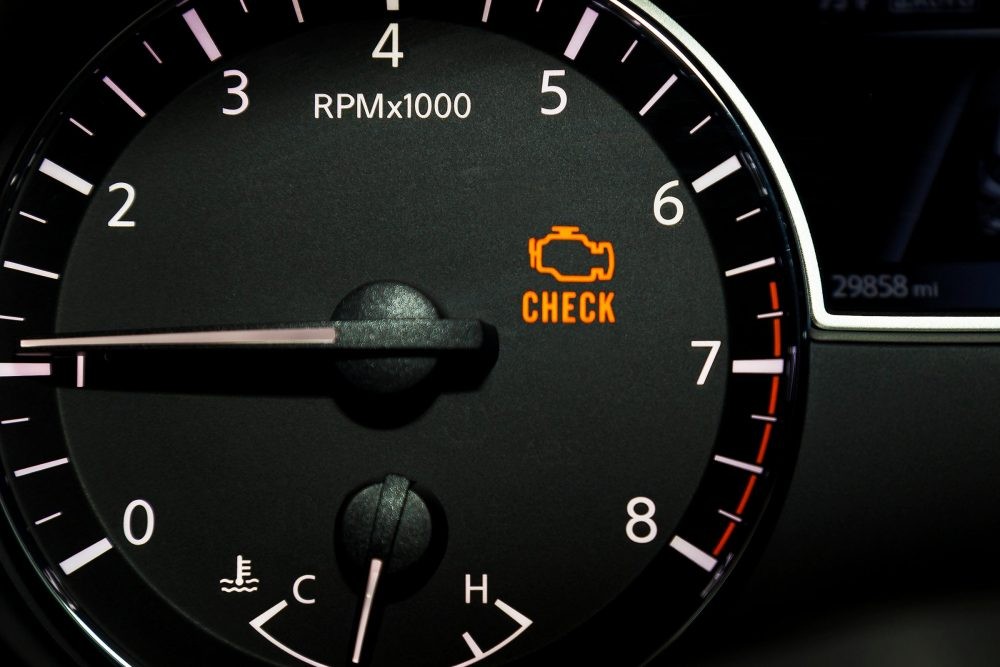 Check Engine Light
Check Engine Light
The check engine light can illuminate for various reasons, including a faulty throttle body. When the ECU detects an issue with the throttle body’s performance, it will trigger the check engine light. While this light can indicate other problems, it’s essential to investigate further if you suspect a throttle body issue.
3. What Tools are Needed to Diagnose a Faulty Throttle Body?
Before diving into the diagnostic process, ensure you have the necessary tools. Having the right equipment will make the job easier and more accurate.
- OBD-II Scanner: This tool reads diagnostic trouble codes (DTCs) stored in the vehicle’s computer, helping you pinpoint the source of the problem.
- Multimeter: A multimeter is used to test the voltage and resistance of electrical components, such as the throttle position sensor (TPS).
- Throttle Body Cleaner: A specialized cleaner designed to remove dirt, grime, and carbon deposits from the throttle body.
- Shop Rags or Microfiber Cloths: For cleaning the throttle body and surrounding components.
- Screwdrivers and Wrenches: Various sizes to remove and reinstall the throttle body.
- Safety Glasses and Gloves: To protect yourself from chemicals and sharp objects.
- DTS-Monaco Software: For advanced diagnostics, car coding, and accessing detailed system information. You can learn more at DTS-MONACO.EDU.VN.
4. How to Perform a Visual Inspection of the Throttle Body?
A visual inspection is the first step in diagnosing a faulty throttle body. It can often reveal obvious signs of damage or contamination.
- Locate the Throttle Body: The throttle body is typically located between the air filter and the intake manifold. Consult your vehicle’s service manual if you’re unsure of its exact location.
- Check for Dirt and Debris: Look for any signs of dirt, grime, or carbon build-up around the throttle plate and bore. Excessive build-up can restrict airflow and affect engine performance.
- Inspect the Throttle Plate: Make sure the throttle plate moves freely and isn’t sticking. It should open and close smoothly when you manually actuate it.
- Examine the Electrical Connections: Check the wiring and connectors for any signs of damage, corrosion, or loose connections.
- Look for Vacuum Leaks: Inspect the vacuum lines connected to the throttle body for any cracks, breaks, or loose fittings. Vacuum leaks can disrupt the air-fuel mixture and cause idling issues.
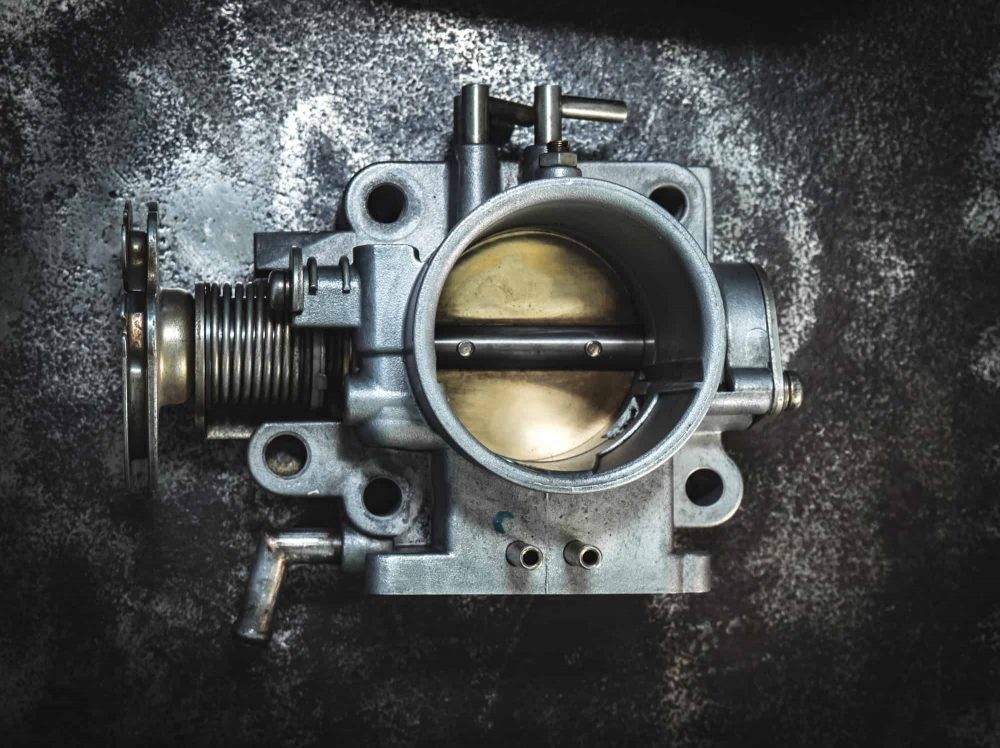 Throttle body
Throttle body
5. How to Use an OBD-II Scanner to Check for Trouble Codes?
An OBD-II scanner can provide valuable information about potential throttle body issues by retrieving diagnostic trouble codes (DTCs) from the vehicle’s computer.
- Connect the Scanner: Plug the OBD-II scanner into the diagnostic port, usually located under the dashboard on the driver’s side.
- Turn on the Ignition: Turn the ignition key to the “ON” position without starting the engine.
- Read the Codes: Follow the scanner’s instructions to read any stored DTCs.
- Interpret the Codes: Consult your vehicle’s service manual or a reliable online resource to interpret the meaning of the codes. Common throttle body-related codes include P0121 (Throttle/Pedal Position Sensor A Circuit Range/Performance), P0122 (Throttle/Pedal Position Sensor A Circuit Low Input), and P0123 (Throttle/Pedal Position Sensor A Circuit High Input).
- Clear the Codes (Optional): After noting the codes, you can clear them to see if they reappear after further testing.
6. How to Test the Throttle Position Sensor (TPS) with a Multimeter?
The throttle position sensor (TPS) provides the ECU with information about the throttle plate’s position. Testing the TPS with a multimeter can help you determine if it’s functioning correctly.
- Locate the TPS: The TPS is typically mounted on the throttle body.
- Disconnect the Connector: Unplug the electrical connector from the TPS.
- Set the Multimeter: Set the multimeter to measure resistance (Ohms).
- Test the Resistance: Connect the multimeter leads to the appropriate terminals on the TPS (refer to your vehicle’s service manual for the correct terminals).
- Vary the Throttle Position: Slowly open and close the throttle plate while observing the multimeter reading. The resistance should change smoothly and consistently as the throttle position changes.
- Check for Dead Spots: Look for any “dead spots” where the resistance doesn’t change or fluctuates erratically. This indicates a faulty TPS.
7. How to Clean the Throttle Body?
Cleaning the throttle body is a straightforward process that can often resolve many common issues.
- Gather Your Supplies: You’ll need throttle body cleaner, shop rags or microfiber cloths, a screwdriver, and safety glasses.
- Disconnect the Air Intake: Remove the air intake duct from the throttle body.
- Spray the Cleaner: Spray the throttle body cleaner onto a clean rag and wipe the throttle plate and bore. Avoid spraying the cleaner directly into the throttle body, as this can damage sensitive electronic components.
- Scrub Away Deposits: Use a soft brush or toothbrush to scrub away any stubborn deposits.
- Wipe Clean: Wipe the throttle body clean with a fresh rag.
- Reassemble: Reconnect the air intake duct to the throttle body.
- Start the Engine: Start the engine and let it idle for a few minutes to allow the cleaner to evaporate.
8. When Should You Consider Replacing the Throttle Body?
While cleaning the throttle body can often resolve minor issues, there are situations where replacement is necessary.
- Physical Damage: If the throttle body is cracked, broken, or otherwise physically damaged, it should be replaced.
- Worn Components: Over time, the throttle plate, bushings, and other internal components can wear out, leading to poor performance.
- Unresolvable Electrical Issues: If you’ve tested the TPS and other electrical components and found them to be faulty, replacing the entire throttle body may be the best option.
- Severe Corrosion: If the throttle body is heavily corroded, it may not be possible to clean it effectively.
- High Mileage: If your vehicle has high mileage, replacing the throttle body as part of a preventative maintenance plan can help ensure optimal engine performance.
9. How Can DTS-Monaco Software Assist in Diagnosing Throttle Body Issues?
DTS-Monaco software is a powerful diagnostic tool that can provide in-depth information about the throttle body and related systems. To learn more about DTS-Monaco software, you can visit DTS-MONACO.EDU.VN.
- Advanced Diagnostics: DTS-Monaco can access detailed system information and perform advanced diagnostic tests that aren’t possible with a standard OBD-II scanner.
- Real-Time Data Monitoring: The software allows you to monitor real-time data from the TPS, airflow sensor, and other related sensors, helping you identify any anomalies or inconsistencies.
- Component Testing: DTS-Monaco can perform component-level testing of the throttle body and its associated components, such as the TPS and throttle motor.
- Car Coding and Programming: In some cases, the throttle body may need to be recalibrated or reprogrammed after cleaning or replacement. DTS-Monaco provides the tools to perform these tasks.
For instance, DTS-Monaco allows you to monitor the throttle plate angle in real-time while revving the engine, identifying any sticking points or delays in response. It can also perform actuator tests to verify that the throttle motor is functioning correctly and responding to commands from the ECU.
10. Why Choose DTS-MONACO.EDU.VN for Your Diagnostic and Car Coding Needs?
DTS-MONACO.EDU.VN offers comprehensive training and resources for automotive technicians looking to enhance their diagnostic and car coding skills. Our courses cover a wide range of topics, including throttle body diagnostics, ECU programming, and advanced troubleshooting techniques.
- Expert Instruction: Our courses are taught by experienced instructors with extensive knowledge of automotive technology.
- Hands-On Training: We provide hands-on training using state-of-the-art equipment and software, including DTS-Monaco.
- Comprehensive Curriculum: Our curriculum covers a wide range of topics, from basic diagnostics to advanced car coding techniques.
- Certification: Upon completion of our courses, you’ll receive a certification that demonstrates your expertise in automotive diagnostics and car coding.
- Career Advancement: Our training can help you advance your career and increase your earning potential.
By choosing DTS-MONACO.EDU.VN, you’ll gain the skills and knowledge you need to excel in the automotive industry. Enhance your skills with advanced car diagnostic tools and car coding techniques today. Visit DTS-MONACO.EDU.VN to learn more about our software and training programs. Our address is 275 N Harrison St, Chandler, AZ 85225, United States, and you can reach us on WhatsApp at +1 (641) 206-8880.
FAQ Section
1. What causes a throttle body to fail?
A throttle body typically fails due to the accumulation of dirt, grime, and carbon deposits that restrict airflow, electrical issues with the throttle position sensor (TPS), physical damage, or wear and tear over time. Regular cleaning and maintenance can help prevent these issues.
2. How often should I clean my throttle body?
It’s generally recommended to clean your throttle body every 30,000 to 50,000 miles, or as part of your vehicle’s regular maintenance schedule. However, if you notice symptoms such as rough idling, poor acceleration, or decreased fuel economy, it may be necessary to clean it more frequently.
3. Can I drive with a faulty throttle body?
While it’s possible to drive with a faulty throttle body, it’s not recommended. A malfunctioning throttle body can lead to reduced engine performance, poor fuel economy, and potentially dangerous driving conditions. It’s best to address the issue as soon as possible to prevent further damage.
4. What is the difference between a mechanical and electronic throttle body?
A mechanical throttle body uses a cable connected directly to the accelerator pedal to control airflow, while an electronic throttle body (drive-by-wire) uses sensors and electronic signals to control airflow. Electronic throttle bodies offer more precise control and enable features like cruise control and traction control.
5. How do I know if my throttle position sensor (TPS) is bad?
Symptoms of a bad TPS include erratic idling, stalling, poor acceleration, and a check engine light. You can test the TPS with a multimeter to check its resistance and voltage output.
6. Can a faulty throttle body cause my car to stall?
Yes, a faulty throttle body can cause your car to stall, especially at idle or when coming to a stop. This is often due to restricted airflow caused by dirt and carbon deposits.
7. Is it necessary to recalibrate the throttle body after cleaning?
In some cases, it may be necessary to recalibrate the throttle body after cleaning, especially on vehicles with electronic throttle control systems. This ensures that the ECU is properly synchronized with the throttle position. DTS-Monaco software can assist with this process.
8. What is “limp mode,” and how does it relate to the throttle body?
“Limp mode” is a safety feature in modern vehicles that limits engine power and speed when a critical fault is detected. A faulty throttle body can trigger limp mode to prevent further damage to the engine.
9. Can DTS-Monaco software help with throttle body diagnosis?
Yes, DTS-Monaco software can access detailed system information, perform advanced diagnostic tests, monitor real-time data, and perform component-level testing of the throttle body and its associated components.
10. Where can I get training on using DTS-Monaco software for automotive diagnostics?
DTS-MONACO.EDU.VN offers comprehensive training courses on using DTS-Monaco software for automotive diagnostics and car coding. Our courses are taught by experienced instructors and provide hands-on training using state-of-the-art equipment.
Take control of your vehicle’s performance today. Diagnose and resolve throttle body issues with confidence using the expert guidance and tools available at DTS-MONACO.EDU.VN. Contact us now to learn more about our courses and software solutions! With our resources, you can enhance your engine tuning and car maintenance capabilities.